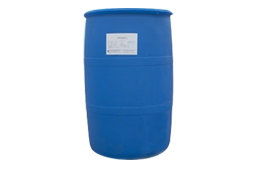The interaction between weak pigment particles and surfactants is another case. At the water-solid interface, surfactants give full play to the natural affinity of hydrophilic and hydrophobic groups in their molecules and selectively locate on both sides of the interface. Hydrophilic groups adsorb water molecules and hydrophobic groups adsorb pigment particles to form a double adsorption layer with pigment particles as the core, The disadvantages of hydrophobicity and lipophilicity of pigment particles are improved. The existence of steric hindrance overcomes the van der Waals attraction between pigment particles and prevents the re flocculation of pigment particles. The greater the steric resistance of the double adsorption layer, the smaller the chance of collision and contact between pigment particles, and the more stable the suspension dispersion system is.

Alkyl glycosides can be divided into anionic, cationic, amphoteric and non-ionic types according to whether their groups can be ionized and the properties of ionized groups. It is generally composed of nonpolar lipophilic groups and polar hydrophilic groups. The two groups are located at both ends of the molecule to form asymmetric hydrophilic and hydrophobic structures.
The structural characteristics of anionic surfactants are that they contain negatively charged hydrophilic groups and hydrophobic groups. The structure of hydrophobic groups is mainly hydrocarbon straight chain and ring chain. The structure of hydrophilic groups is mainly alkali metal sulfonate groups and sulfate groups. The surfactants of potassium, sodium and ammonia salts have high solubility in water and can be used in the manufacturing of aqueous paint paste.
The structural characteristics of cationic surfactants are that they contain positively charged hydrophobic groups, often large volume quaternary ammonium compounds, and have strong adsorption capacity on solid surfaces. They are mostly used in solvents or acidic aqueous systems.
The structural characteristics of amphoteric surfactants are that their groups ionize groups with different charges with different pH values of the system, showing the function of anions or cations. Because of their unstable properties, amphoteric surfactants are less used in the coating industry.
Nonionic surfactants can not be ionized in aqueous systems, but can be hydrated by hydrogen bonds through oxygen in the molecules. The molecules contain both hydrophilic hydroxyl or ether bonds and hydrophobic ester or amide bonds. They can be compatible with ionic surfactants and have excellent compatibility. They are widely used in the preparation of aqueous paint pastes.
In the aqueous dispersion system, the application performance of surfactants is greatly affected by the pH value of the solution. Most ionic surfactants, especially ionic surfactants, can achieve good results only when applied within a certain pH value range. The water-soluble coating and color paste system are generally weakly alkaline, and the pH value is about 7.5 ~ 8.5. Therefore, anionic and non-ionic surfactants can be selected, as shown in Table 1, The adsorption stability of anionic surfactant in aqueous system is easy to change due to the influence of coexisting ions, pH value, temperature and other factors, so it should be used with caution. In practical application, a variety of surfactants are often used to meet the adsorption needs of pigment particle surface.